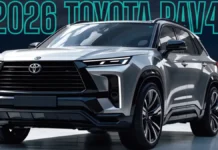As the automotive industry continues its transformation towards electric mobility, few companies have experienced a growth trajectory as remarkable as that of BYD. The Chinese automaker, which initially focused on electric vehicles (EVs) and batteries, is now on the verge of becoming one of the global giants in car manufacturing, possibly even surpassing Stellantis to secure the coveted fourth spot in global automotive rankings.
A Meteoric Ascent in Global Automotive Rankings
BYD’s ascent over the past few years has been nothing short of astonishing. In 2019, the company sold just under 500,000 vehicles. Fast forward to 2024, and BYD is eyeing a total of four million vehicle sales, marking a massive leap in both production and market penetration. While the company has not officially confirmed this target, its momentum is undeniable. By the end of September 2024, BYD had already delivered 2.75 million vehicles, and the year’s final quarter promises even stronger sales figures.
In October 2024, BYD hit an impressive milestone by delivering 534,003 vehicles in just one month—a volume that exceeds its total annual sales from just five years ago. November 2024 wasn’t far behind, with 506,804 vehicles sold domestically in China, along with 30,977 vehicles shipped internationally. With these strong results, the company is poised to hit the four million sales mark in the very near future.
Surpassing Ford: BYD’s Steady Progress
The Chinese automaker has already surpassed Ford in global rankings during the third quarter of 2024, securing the 6th position. The gap between BYD and Ford is minimal, and with the latter’s sales forecasted to drop, it’s increasingly likely that BYD will surpass Ford’s sales in the coming months, if not this year. Ford’s global performance in 2023 stood at 4.4 million vehicles, but the American giant has been facing a decline in overall sales, making it vulnerable to the rapid rise of newer, more agile players like BYD.
Targeting the Top 4: GM and Stellantis in the Crosshairs
Next on BYD’s radar is General Motors (GM) and Stellantis, which both posted sales figures of around 6.2 million vehicles in 2023. However, the challenge of surpassing them is more than just a numbers game—it’s about strategy, market penetration, and global presence.
Though the gap remains significant, BYD is closing in fast. In fact, both GM and Stellantis have been experiencing a steady decline in global sales. Notably, GM’s results are partly inflated by the contributions of its Wuling and Baojun brands in China, which are controlled by SAIC (a state-owned Chinese automotive company), with GM’s stake in these brands being less than 50%. Without these brands, GM would find itself in a precarious position, with BYD likely overtaking it in the near future.
Stellantis, which was formed after the merger of Fiat Chrysler and Peugeot, is also experiencing a slowdown in its global sales. With an ongoing shift towards electric mobility, Stellantis faces intense competition, particularly from BYD, which has established itself as a major player in the electric vehicle market.
China’s Influence on Global Markets: A Key Factor in BYD’s Growth
At present, BYD stands as the only Chinese automaker in the Top 10 of global rankings. However, other Chinese automotive giants like Geely, which holds the 11th position, are rapidly catching up. Meanwhile, Chery and Changan have also secured spots within the Top 20, signaling the rise of Chinese manufacturers on the global stage.
These companies are still in the early stages of expanding beyond China, which has traditionally been the world’s largest and most competitive automotive market. But as the global automotive market shifts towards electrification, Chinese automakers are not just maintaining their position in China—they are aggressively pushing into Europe, Asia, and other emerging markets, potentially putting even more pressure on traditional Western manufacturers.
In fact, the rise of BYD and other Chinese companies is forcing traditional automakers to rethink their strategies, particularly as the Chinese market, which has long been a cornerstone of global automotive sales, becomes increasingly difficult to penetrate. BYD’s rapid international expansion, particularly into Europe, is a sign of things to come, as it continues to roll out new models and push for greater market share.
BYD’s Path to Becoming the World’s EV Leader: Will Tesla Be Overtaken?
Despite its impressive growth, BYD still has a way to go before it can claim the title of the world’s number one electric vehicle manufacturer. Although the gap between Tesla and BYD has narrowed significantly, Tesla remains ahead, albeit by a small margin. BYD has been gaining ground with a diverse range of electric vehicles, including the popular BYD Dolphin, the Sealion 7, and the Tang EV, all of which have been well-received in markets such as China and Europe.
While Tesla continues to dominate the EV market in terms of sales, BYD has expanded its range to cater to a wider audience, offering a more affordable alternative to Tesla’s high-end models. Moreover, the Chinese company has made significant strides in battery technology, further bolstering its position as a leading player in the electric vehicle sector.
In the near future, it is entirely possible that BYD could surpass Tesla in terms of total global EV sales, thanks to its expanding model lineup and the continued growth of its international presence. However, for now, Tesla remains the undisputed leader in the electric vehicle market, even though BYD is steadily closing the gap.
The Road Ahead: What’s Next for BYD?
Looking ahead, BYD will continue to push forward with its ambitious goals. The company has already surpassed expectations in terms of sales and production, and it shows no signs of slowing down. As the global automotive market continues to evolve, BYD is positioned to remain at the forefront of the electric revolution.
For the time being, BYD’s immediate goal is to solidify its position in the Top 5 and eventually move into the Top 4 by surpassing Stellantis and GM. As the company continues to expand its global footprint, it will undoubtedly face challenges from both established manufacturers and up-and-coming players in the electric vehicle space. But given BYD’s track record of success, it’s clear that the company is more than capable of overcoming these hurdles.
BYD’s Future as a Global Automotive Leader
The meteoric rise of BYD has been one of the most exciting developments in the automotive industry in recent years. From humble beginnings, the Chinese automaker has transformed into a global force, capturing market share at an astonishing rate. As BYD continues to expand its presence in international markets, it is well on its way to becoming one of the world’s leading automakers—possibly even surpassing traditional giants like Stellantis and GM.
While it may take a few more years for BYD to overtake Tesla as the number one electric vehicle maker, the company’s rapid growth, innovative vehicles, and aggressive expansion strategy position it as a major contender in the global automotive market. The future of BYD looks brighter than ever, and the company’s journey toward becoming the world’s fourth-largest automaker is one that will be closely watched by the entire industry.




















